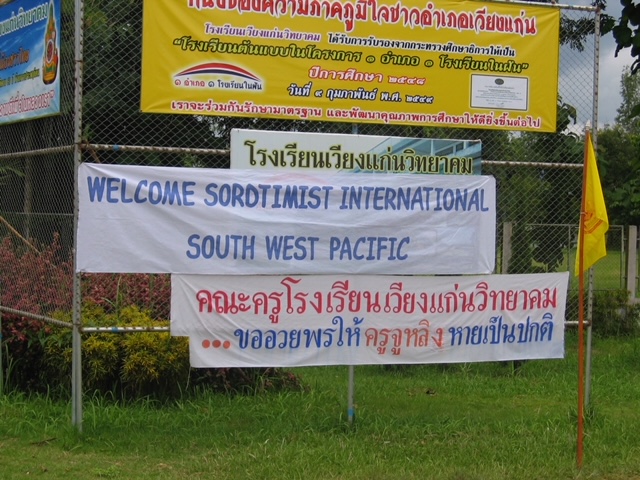1990 - 1999 Decade - the Last Hurrah of the 20th Century!
Written by Leigh Ellwood Brown, Past Federation President.
The Globe experienced the biggest change to date in technology in the 1990's with the introduction of the internet and the mobile phone, which began to change the face of telecommunications and entertainment. This is the decade that introduced exciting new technology such as:
The World Wide Web (www) which publicly debuted as an Internet service; The 1st version of Microsoft's Outlook was released; The 1st ever text message was sent by software engineer Neil Papworth to his friend Richard Jarvis, an executive at Vodafone UK; Our social networking changed when they released the 1st version of google ' an Internet search engine & the fledgling Hotmail - begins to offer free, use-anywhere, internet email; About 10 million users worldwide have free web mail accounts & then Yahoo Mail Follows; In the 90's there were more music choices available than ever before - do you recall the moves to the Macarena? Dance moves that are still popular today! Some truly unique fashion trends - the decade of the 90's was known for denim jeans and fashion that indicated the bigger and more colourful you were the more fashionable you were! It was in this decade that J.K. Rowling released her 1st Harry Potter Book.
A major figure of the 90's was Nelson Mandela as he became one of the most important peace leaders in history and was elected president of South Africa in 1994. Women were taking on important positions - In 1993 Janet Reno is sworn in as the first female attorney general of the United States; In 1997, Madeleine Albright is sworn in as the US first female secretary of state; Joan Kirner became Victoria's 1st female premier, and Australia's 2nd; In 1992, Sharelle Quinn became Australia's 1st female international captain with Qantas Airlines; In February 1991, Dame Roma Mitchell became governor of South Australia. She was the 1st woman to hold vice-regal office anywhere in Australia. A keen advocate of women's rights, she was the 1st woman to be made a Queen's Counsel, the 1st to be made a Justice of a Supreme Court (1965) and 1st to be a chancellor of an Australian University (University of Adelaide, 1983'90). Soroptimist Dame Margaret Blackwood an Australian botanist and geneticist & a member of SI Melbourne was the 1st female deputy - chancellor of the University of Melbourne (1980) . Read More Information about Margaret Here
The changing world in the 90's: The Cold War officially ended with the fall of the Soviet Union on Christmas Day 1991, and it seemed as if a new era had dawned, after the Berlin Wall fell; In Europe in 1994, the Channel Tunnel opened, connecting Britain and France; The euro made its debut as the European currency in 1999; the world was worried about the Y2K bug as the millennium turned, and Panama got the Panama Canal back; In 1997 Hong Kong was returned to China after years as a British Crown Colony. The Pathfinder lander sent back images of Mars to Earth. And who we forsee about Princess Diana's death? The driver of the car? The paparazzi? Or the magazines and papers who make bounty hunters out of photographers?
Low Points of the 90's: Pollution began to grow in the 90s more than ever before and sparked a problem that is still a major issue today. The percentage of people living below the poverty level fluctuated in a fairly narrow range. In 1998, it stood at approx 12.7%, the overall figures mask much more severe pockets of poverty.
 In September 1995, the Fourth World Conference on Women was held in Beijing, it built on political agreements that had been reached at the three previous global conferences on women, and it consolidated five decades of legal advances aimed at securing the equality of women with men in law and in practice. A parallel NGO Forum held in Huairou near Beijing also drew some 30,000 participants. The conference marked a significant turning point for the global agenda for gender equality. The Beijing Declaration and Platform for Action, (BPFA), was adopted unanimously by 189 countries, an agenda for women's empowerment that is now considered the key global policy document on gender equality. It set strategic objectives and actions for the advancement of women and the achievement of gender equality in 12 critical areas of concern. The four world conferences on women convened by the United Nations in the last quarter of the twentieth century were instrumental in bringing the cause of gender equality to the centre of the global agenda. Read this Soroptimist reflection on the conference by Bev Becur and Patsy Daniels
In September 1995, the Fourth World Conference on Women was held in Beijing, it built on political agreements that had been reached at the three previous global conferences on women, and it consolidated five decades of legal advances aimed at securing the equality of women with men in law and in practice. A parallel NGO Forum held in Huairou near Beijing also drew some 30,000 participants. The conference marked a significant turning point for the global agenda for gender equality. The Beijing Declaration and Platform for Action, (BPFA), was adopted unanimously by 189 countries, an agenda for women's empowerment that is now considered the key global policy document on gender equality. It set strategic objectives and actions for the advancement of women and the achievement of gender equality in 12 critical areas of concern. The four world conferences on women convened by the United Nations in the last quarter of the twentieth century were instrumental in bringing the cause of gender equality to the centre of the global agenda. Read this Soroptimist reflection on the conference by Bev Becur and Patsy Daniels 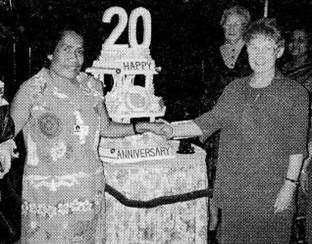
General view of the opening session of the Fourth World Conference on Women in Beijing, China, 4 September 1995.
Soroptiist International sent a delegation to Beijing. May Lamont from Soroptimist International Region of South Queensland attended this Conference. May (pictured to the right ) at the time was the National Australian President of UNIFEM (now known as UN Women), In Beijing UNIFEM celebrated its 20th Birthday. At the celebration Margaret Aihunu from the Solomon Islands and May were asked to cut the cake. Quite an honour. May was the National President representative and Margaret was the representative for the developing countries.
Soroptimist International President's:
1989-1991 Thelma de Leeuw SIGBI
1991-1993 Joan Banks SISWP
1993-1995 Marie-Jeanne Bosia-Berberat SIE
1995-1997 Patricia Daniels SIA
1997-1999 Hilary Page SIGBI
1999-2001 Jane Zimmerman SISWP
Our SI International Quadrennial Projects were decided by a rotation system, each Federation took it in turns to initiate and put forward a project for all members around the globe to financially support, awareness & education on the subject and Project countries.
1991 - 1995 Soroptimist International partnered with Sight Savers. This project aimed to establish and support seven clinics in Bangladesh for young children who are at risk of becoming blind. They focused on eye care and the education of mothers on health, nutrition and hygiene. Each year the clinics individually assisted more than 25,000 children suffering from any sickness or injury. This project gave Soroptimists the opportunity to be involved in the WHO Prevention of Blindness Programme. Sight Savers has an official relationship with the World Health Organisation and contributes actively to this programme.
1995-1999 Soroptimist International AIDS Mediation (SIAM). The project was recommended by SI South West Pacific following a successful pilot project run by S.I. Victoria that provided alternatives to the commercial sex industry and so help stop the pandemic of HIV/AIDS which affected so many young women. Young women in 12 villages in Chiang Rai Province in Northern Thailand benefited from this project. SI partnered with the Population and Community Development Association (PDA) in Thailand, that continued and expanded this project to over 300 villages.
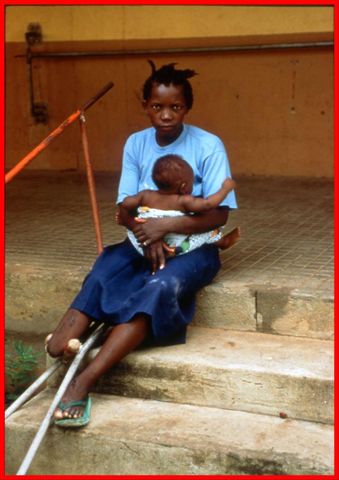
1999 ' 2003 Limbs for Life In partnership with the International Committee of the Red Cross, a four-year project to restore human dignity to the victims of landmines and help them to become mobile and be reintegrated into society. The programme was conducted in Afghanistan, Angola and Georgia, and supplied artificial limbs as well as promoting the physical and psychological recovery of the victims. Read more about the project and Soroptimist International's position on land mines. View a presentation on the SIAM and the Limbs for Life project here
SI Presidents Appeal (PA)
Each year since 1981, on Soroptimist International Day, 10 December, which is also Human Rights Day, the International President invites all Soroptimists to join with her in making a small sacrifice and sending the money thus saved to Soroptimist International Headquarters, through their Federations. The funds thus accumulated are used by the International President to assist some of the poorest women in the world.
1997-1999 Hilary Page's Presodets Appeal - built Women's Resource Centres in the Solomon Islands for Women to meet and have Women's Space
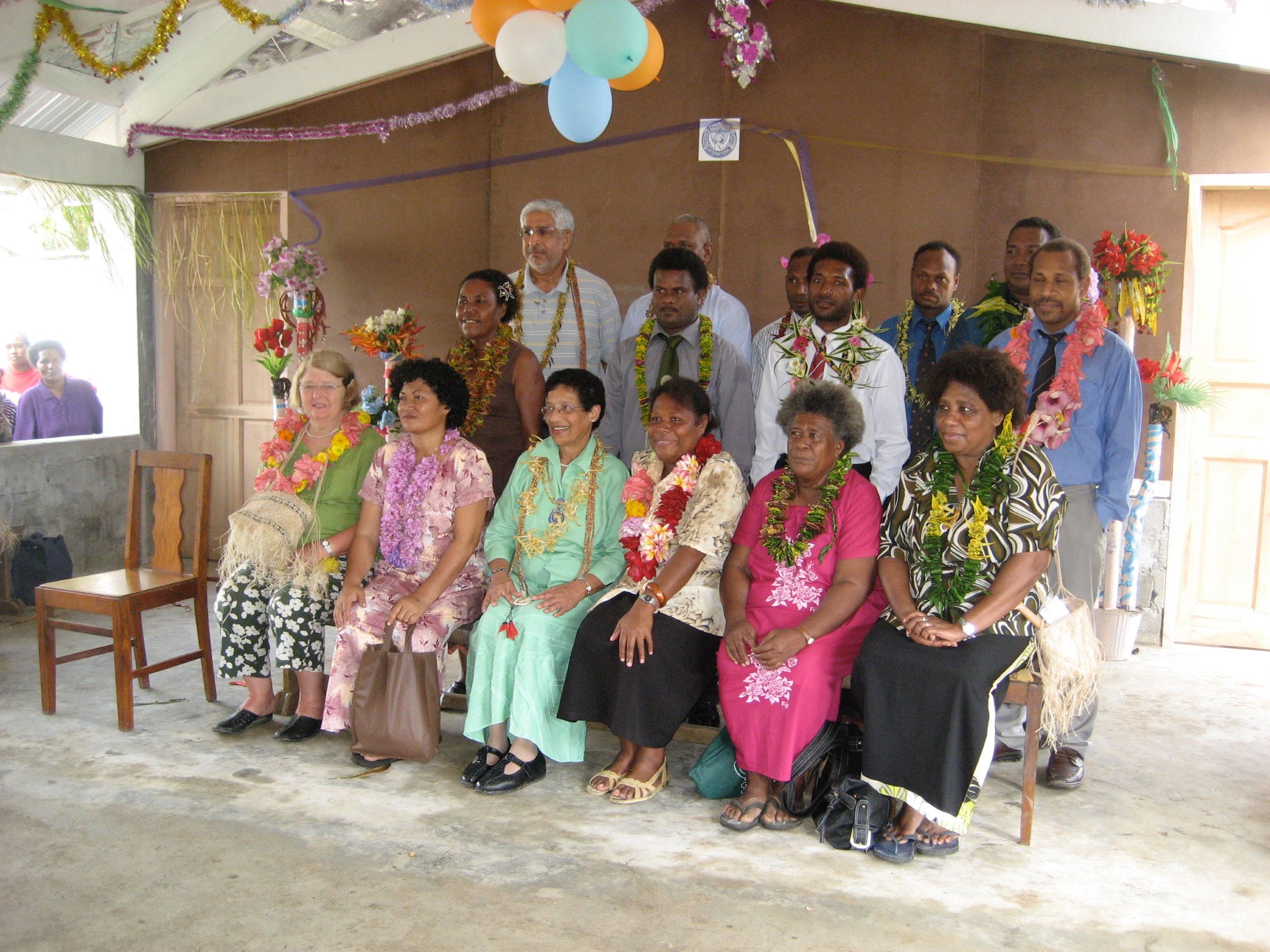
In 1995 Our International History was recorded - “The History of Soroptimist International” by Janet Haywood, books were sold internationally.
Project Five-O: Soroptimist International was involved in 5-0 projects in Bangladesh, Brazil, India, Madagascar, the Philippines, Senegal, Thailand, Turkey and Western Samoa while other projects were under consideration as at 1996, PNG was one of those countries.
CHINA: In 1998, SI who had been working closely with delegations from the All China Women's Federation (ACWF) of China at various UN meetings, received an invitation from ACWF to attend & participate in their “Follow Up Actions to the 4th World Conference for Women" in Beijing. The SI President Hilary Page took the invitation with her to Jane Zimmerman's CoC in Hobart. At this Conference we had a side meeting to discuss the invitation. It was decided that SISWP would take up the invitation from SI as China had been allocated to our Federation for Extension. As Leigh Ellwood-Brown was the incoming Federation Extension Convenor, she would represent Soroptimists at this Forum. As we were asked to give a presentation to the Forum on what Actions Soroptimist had taken in the 3 years since the Beijing 4th world conference for Women in 1995. The decision was made to have Lucy Loh-Wong from Malaysia and Leigh to represent our diversity, to give the 7-minute presentation, both on stage like a 'Show & Tell'. Each Federation sent pages of Projects that had been undertaken around the world. Leigh & Lucy decided to present 2 projects as a sample of the work Soroptimists collectively did around the globe. Receiving a standing ovation from the Presentation being timed to the second including interpretation. Lucy recalls that our SI delegation were the only ones that presented that the Media flocked to and also the only organisation to receive a one-on-one meeting with ACWF & SI, it was the catalyst of Jane Zimmerman's International Presidents Appeal, 'Legacy of Learning' and a 20 year close Association with ACWF.
South West Pacific
SISWP in 1999 came of age… it is 21 years since we were presented our Charter in Adelaide in 1978
The 1990's was a decade for a variety of growth & development for our SISWP Federation under the guidance and Leadership of our SISWP President's:
1990-1992 Elaine Mooney NSW
1992-1994 Janice MacDonald NZ
1994-1996 Pat Stricklin WA
1996-1998 Jane Zimmerman Tasmania
1998-2000 Margaret Lobo WA
Toward 20-20 Vision for the Future ' A major Re-Structure for our Federation: During 1990 ' 1992 with Elaine Mooney as our SISWP President an ad hoc committee was formed - The Long-Range Planning Committee, Chaired by Chris Paton of SI Melbourne.
During the Biennium of 1992 ' 1994. Margaret Lobo said: “For the 20-20 Planning Committee Pat Stricklin WA, Margaret Lobo WA, Jane Zimmerman Tasmania, Joy Clark NZ & Margaret Chisholm Victoria, met every Sunday, working via Fax on the Constitution and the Duties & Roles of Responsibility for our National Representative's.”
Throughout the 90's this committee developed a new structure culminating with the acceptance of a new Constitution at Pat Stricklin's Conference of Clubs (CoC) in Perth in 1996 to be implemented at the start of the 1998 biennium. This structure was to give each nation within the Federation a National voice through their country's National Representative. The Constitution provided One country = One Vote and each of our SISWP countries were then represented on the SISWP Board.
This image shows the diversity of members
At Jane Zimmerman's CoC themed 'Bridging the Centuries”, the old structure of Federation Council changed to the new structure. Jane said the 1st Website Launch and the growth within Malaysia were the highlights of her biennium. Jane as SISWP President, Leigh Ellwood-Brown as SISWP Extension Convenor and Lorna Mead as SI Extension Convenor Chartered 7 Clubs throughout Malaysia during one trip over a number of days. Thank you to the hard work on the ground by Lucy Loh-Wong the Extension Convenor of SI Malaysia.
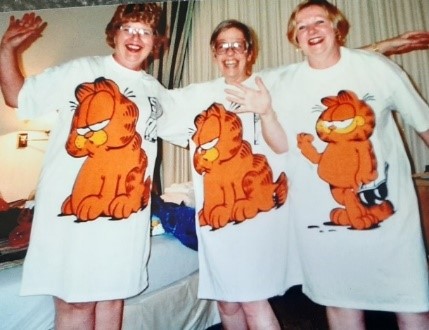
Photo: Lorna, Jane & Leigh in a Kota Kinabalu Motel, Borneo in November 1996, after many long hours and days on a Soroptimist trip having a little fun after hours with Garfield the cat on oversize T-shirts, (Garfield is Jane's favourite).
The first SISWP web page was designed as the result of a request from the 1996-1998 Executive that Ralda Forzin of South Queensland investigate the feasibility of the Federation having its own web site, the first SISWP web page was designed as the result of this decision. Recognising rapid change in IT the Federation also appointed Ralda as our first SISWP Website Liaison in 1998. Ralda noted: “Prior to computers in 1991-93, I remember SI President Joan Banks from Victoria, saying how useful the fax had been in organising an international convention in conjunction with the President of another Federation. She said she received something like 20 faxes a night while she was asleep - overcoming the time differences for phone calls.”
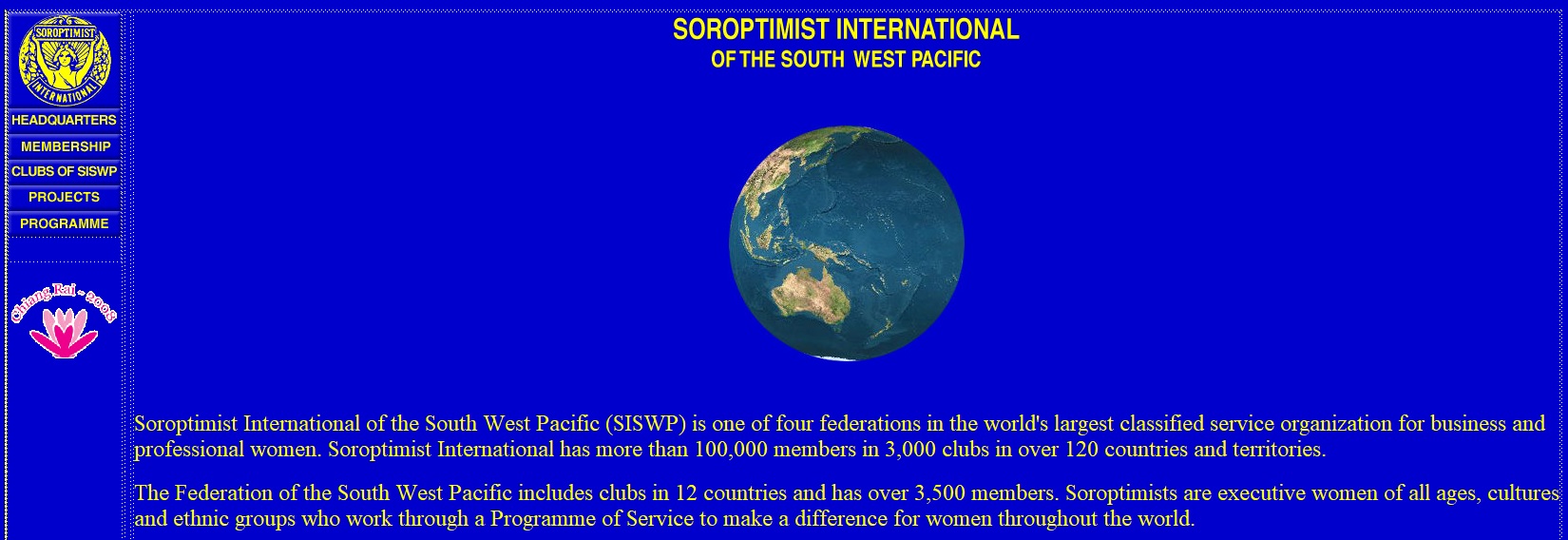
An image of the front page of the very first SISWP website
The Internet started to make its presence felt after then, heralding a fast-changing world of communication, and SWP has proven that we are capable of adapting to this evolution through diverse media avenues.
In 1998, at the completion of Jane's CoC in Hobart, she resigned as SISWP IPP to become SI President Elect. Pat Stricklin served her 2nd term as SISWP IPP in Jane's place. Jane became the SI President from 1999 ' 2001.
Margaret Lobo was our 1st SISWP President to reside over the task of implementing the new SISWP Constitution that gave us a completely new structure giving each of our SISWP nations a place at the table. Margaret from SI Perth WA organised her CoC by fax as she held her CoC themed “Stand up and be Counted” in Townsville due to a successful Motion put to the previous CoC by SI Townsville. She was the 1st Pres to have the smallest Interim Board Meeting (IBM) after the restructure, it was held in our SISWP HQ premises in Macquarie St, Sydney.
Extension: An expansion strategy heralded future changes of our federation boundaries. At the start of the 1990s, SWP applied to SI for the allocation of a range of countries in Asia and the Pacific rim. Formerly our country focus was on a handful of southwest Pacific countries, this change of direction created opportunities for a more diverse pool of future potential members. The richness and diversity of culture, dress and languages in our newer countries has brought a truly global image.
Dramatic changes started with the SISWP Charter of SI Kuala Lumpur in 1991, the first club in Malaysia, SI Jakarta Indonesia 1992, SI Solomon Islands 1992 and the transfer of SI Hong Kong in 1998 that was originally Chartered 1st Jan 1961 by SIGBI. These countries provided a significant Asian & Pacific base for SISWP. Sadly, when SI Tonga closed in 1998, we lost a Single Club Country.
In 1999, SISWP Programme Director, Dr. Indrani Manuel of SI Malaysia, attended a UN regional meeting in Bangkok on behalf of SISWP. She sat next to Zanaa Jurmed, the director of CEDAW Watch of Mongolia. Zanaa was inspired by Indrani's stories of how SI works, and our achievements. (Never underestimate the value of talking to strangers about SI and its work.) Soon after the UN meeting Zanaa contacted Indrani for more information with the intent to introduce SI into Mongolia. Indrani asked Lorna Mead as the International Extension Chair to assist her in communicating with Zanaa, and we asked Joy Clark of New Zealand to travel from her volunteer teaching role in northern China to commence education of Zanaa's group of potential members in Ulaanbaatar (UB), the Capital of Mongolia. Preparation for this Charter was done online with the use of teleconference. International Soroptimists from Europe and Japan also helped with this new club. One of their first projects was related to Violence against Women. SI Mongolia was chartered 9th September 2000, in 2005 changed its name to SI Ulaanbaatar.
Federation Projects:
1992 - 1996 Alzheimer's Research Alzheimer's Disease Project. The Soroptimist Post-Doctoral Fellowship in Dementia Research was granted to Dr Dino LoGiudice, a Consultant Physician in Geriatric Medicine, who carried out research into the carers of people with Alzheimer's Disease. On completion of our agreement with the National Health and Medical Research Council, it was agreed that the extra funds and interest raised thereon be donated to an Alzheimer Association. As it was considered undesirable to select an association in a particular country or state, it was then agreed that the remaining money be used for publications which could be distributed throughout the Federation. Remaining funds were used to create a web site providing information and support to carers of Alzheimer sufferers.
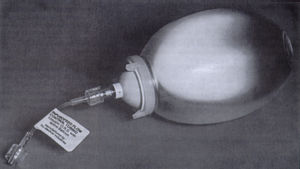
1998 ' 2000 Training of Village Health Workers This project aimed to send volunteer medical teams to areas within the Federation to train health workers in the villages in the use of gastric feeding balloons and to purchase buckets of balloons plus sterilizing tablets. A subcommittee was set up in Perth to co-ordinate and dispatch the systems to areas where doctors had trained local people in the use of the balloon. Funds from the project continued to be expended in the following biennium
Soroptimist Overseas Development Programme - Australia (SODP-A) & Soroptimist Overseas Development Programme - New Zealand (SODP-NZ) The Federation established the Soroptimist Overseas Development Programme, with committees in Australia and New Zealand, which had been recognised by the governments of those countries as approved non-government organisations for the purpose of international aid funding subsidies.
'Soroptimist News'- SISWP Hard copy magazines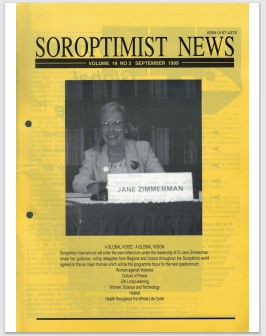
We produced our own Federation magazine usually issued quarterly in March, June, September and December. Dawn Perrin from Monaro (1986 ' 1996) & Madeline Wright, SI South Queensland (1994 -2000) were the Editors throughout the 1990's.
Madeline said: “Dawn single handedly produced an A5 black and white booklet with tons of news and programme items, it was a great read! In 1994, Pat Strickland as Federation President asked me to take on the role of editor and to produce a more up to date magazine.
Not having a background in publishing, I formed a team with Pam West-Newman doing the formatting and Ralda and Mitch assisting with articles. We moved the magazine to an A4 full colour glossy magazine but it was still fairly basic due to our lack of experience. We decided on all covers to be yellow with a photo and caption relating to one of the articles.
I remember many nights in my dining room packing the magazines into club envelopes, weighing them to make sure they fitted the limit for distribution, often inserting them into two envelopes if they weighed too much and getting the crates ready for collection by Australia Post. I did this by myself as it was too time consuming to keep explaining the system to those who wanted to help. Remember at that stage we had nearly 3000 members and they all received a copy. I had to keep the postage costs down and so each envelope could only weigh a certain amount before it became a parcel. Amazing how some editions weighed much more than others and so there was a constant juggling with them, also annoying when it was only 1 copy that pushed it over the limit. We also had postage Zones to contend with as some overseas (European etc) Soroptimists were included in the mailing list. Fun days but glad they are over.”
As we said goodbye to the 20th Century, SISWP was in a very good place of change and direction to cater for our Projects and Programme of Service to help Women & Girls reach their full potential. Federation Governance was also constantly being reviewed as we all work to keep up with the changing times in technology.
Leigh Ellwood - Brown
One of the ongoing projects in Mongolia to provide housing for women in the form of Gers.
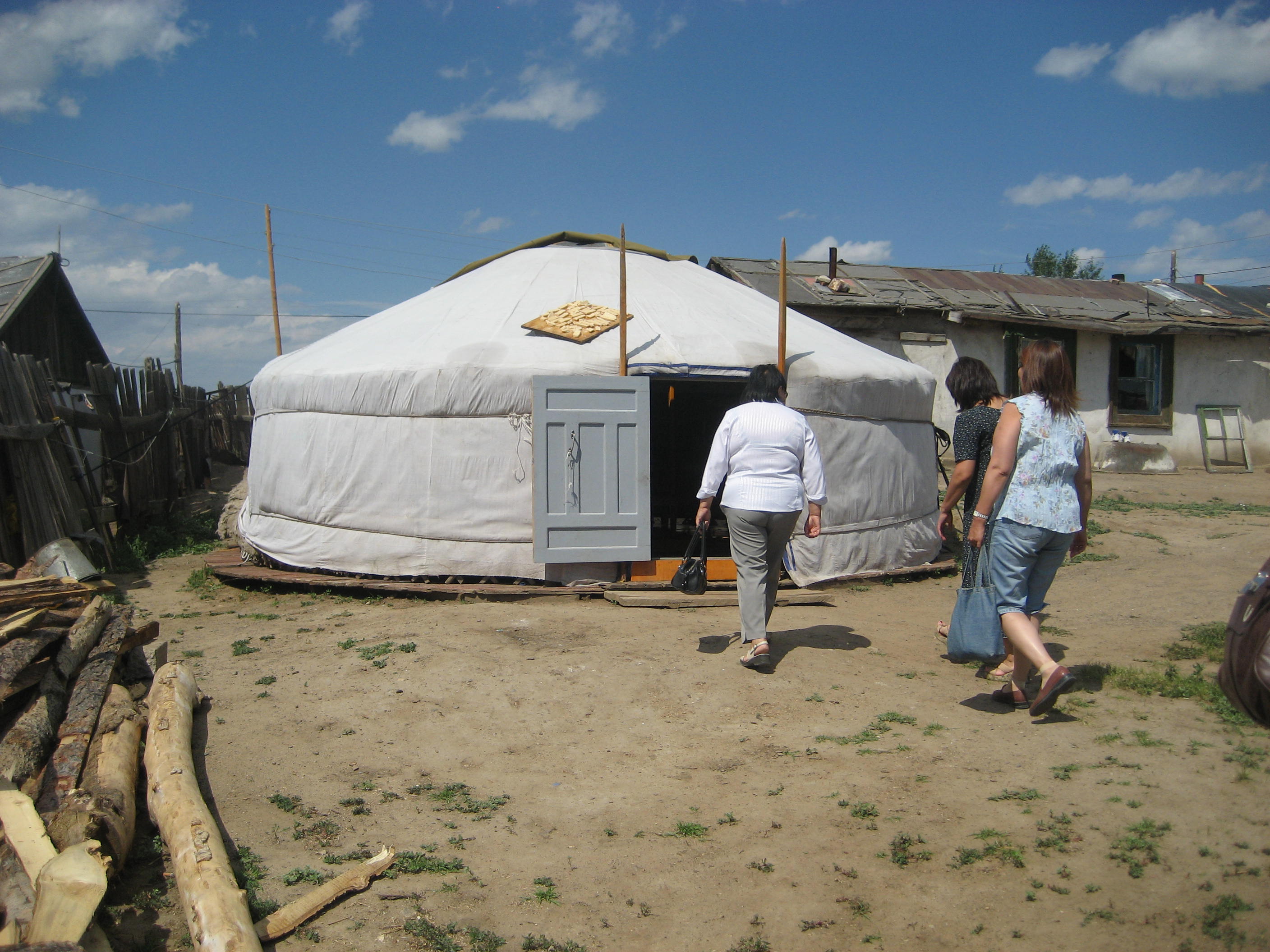
Publicity awareness of the SIAM project in Thailand
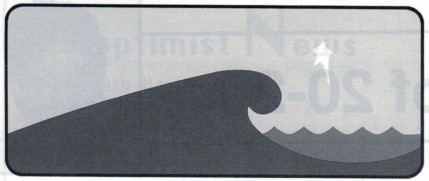
Image of some early SISWP branding
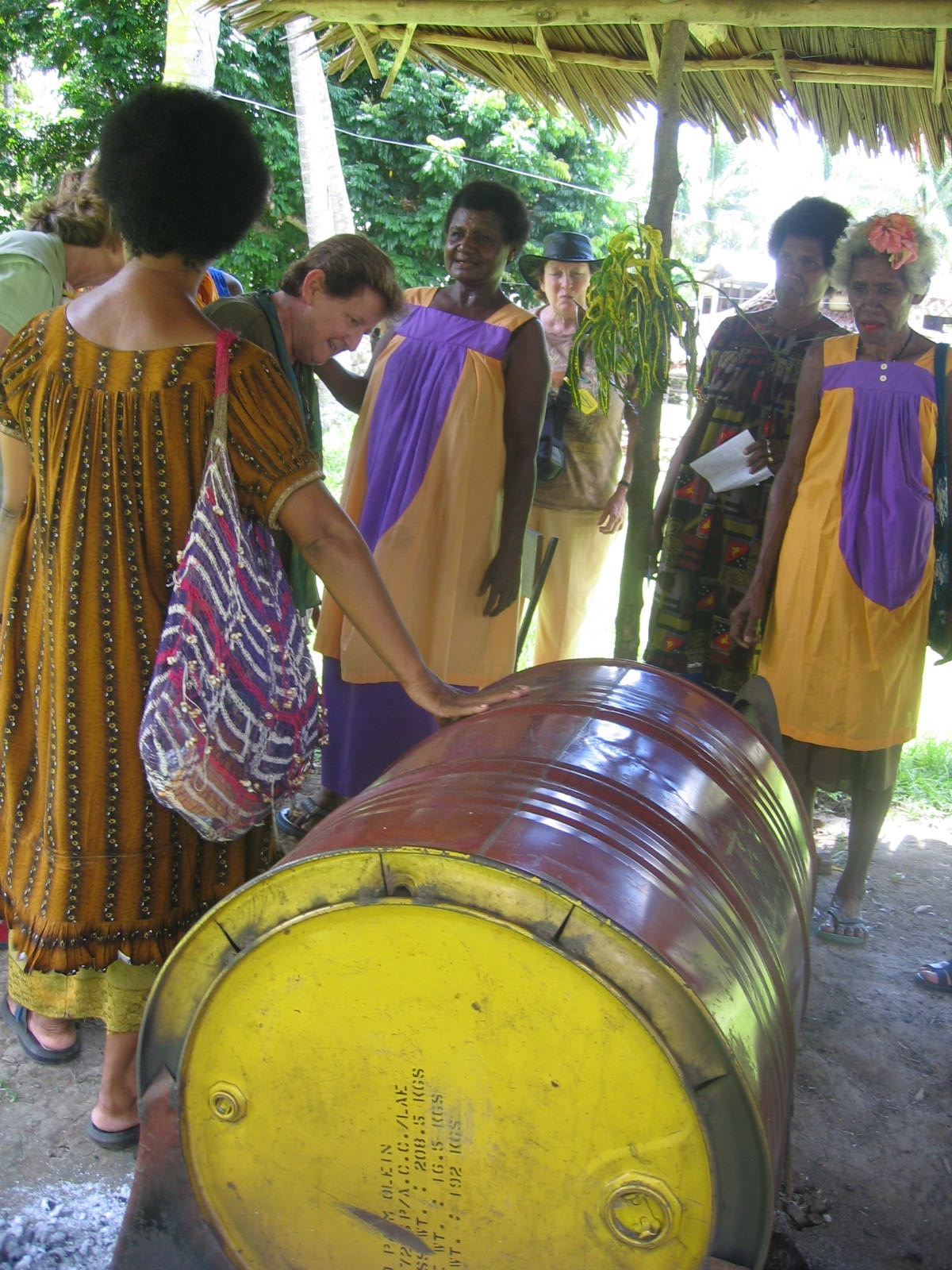
A image of a PNG 5-0 project
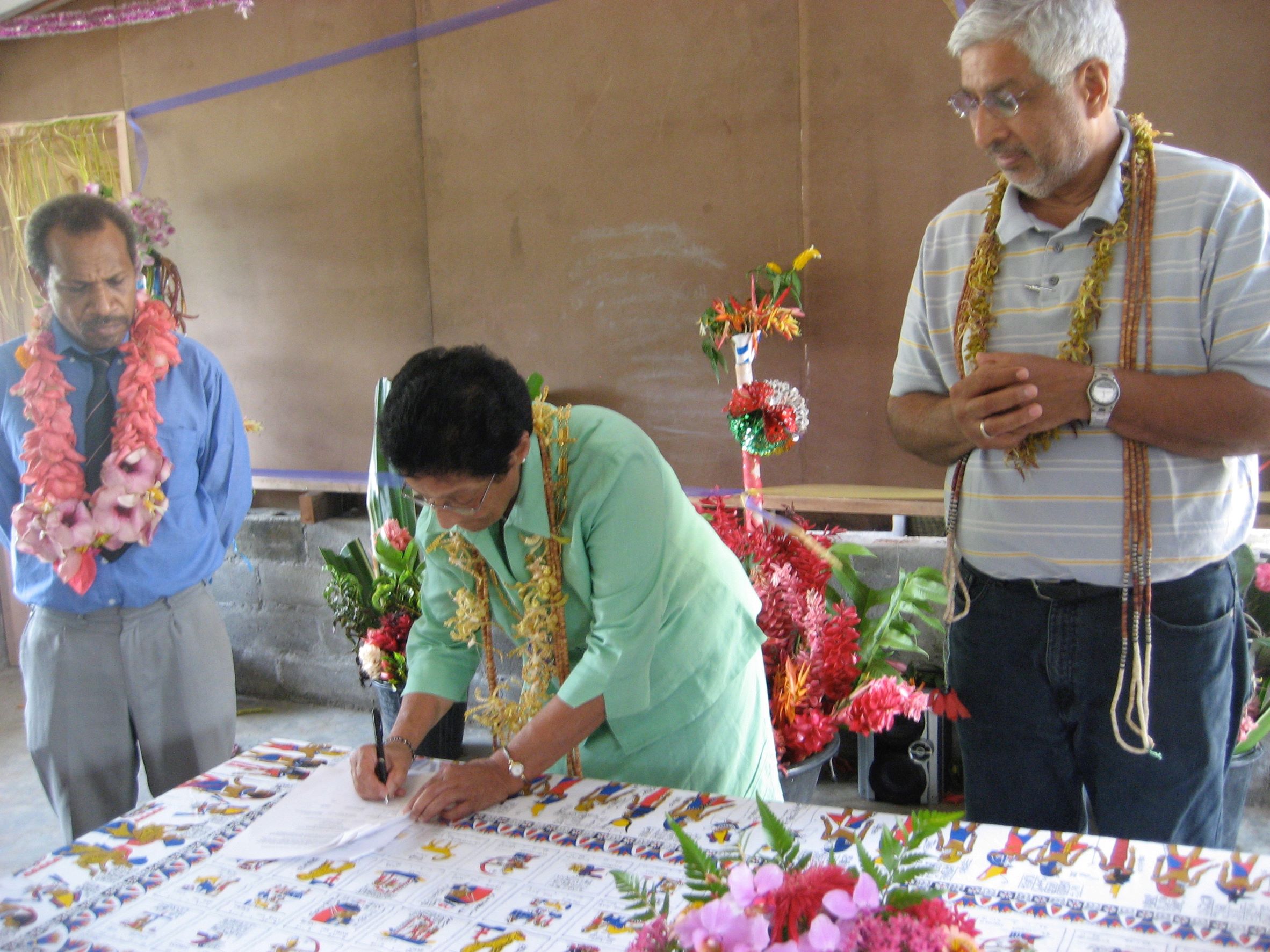
Margaret Lobo launching a project in the Solomon Islands
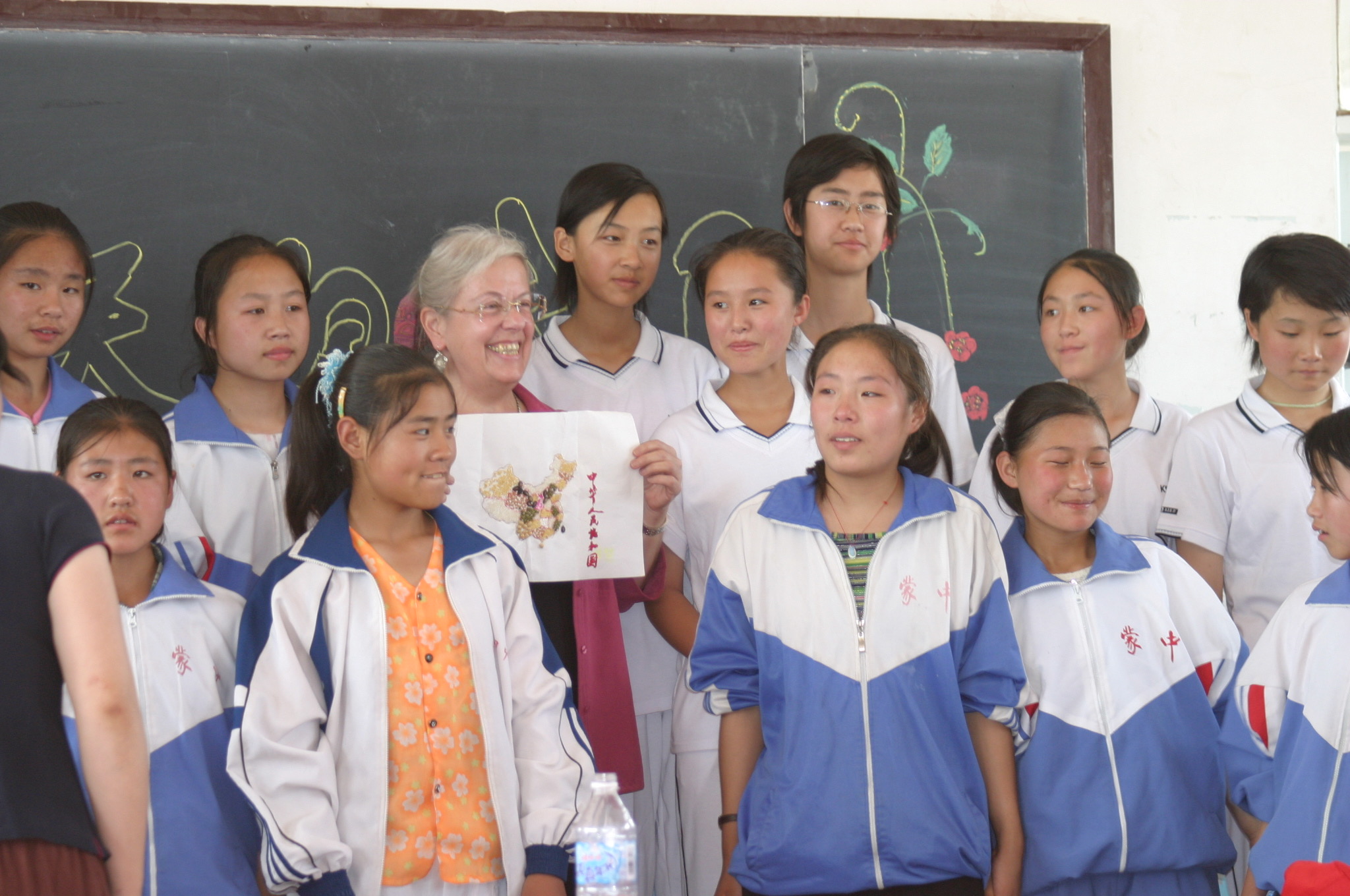
Jane Zimmerman, as SI President and her Legacy for Learing project in Inner Mongolia

